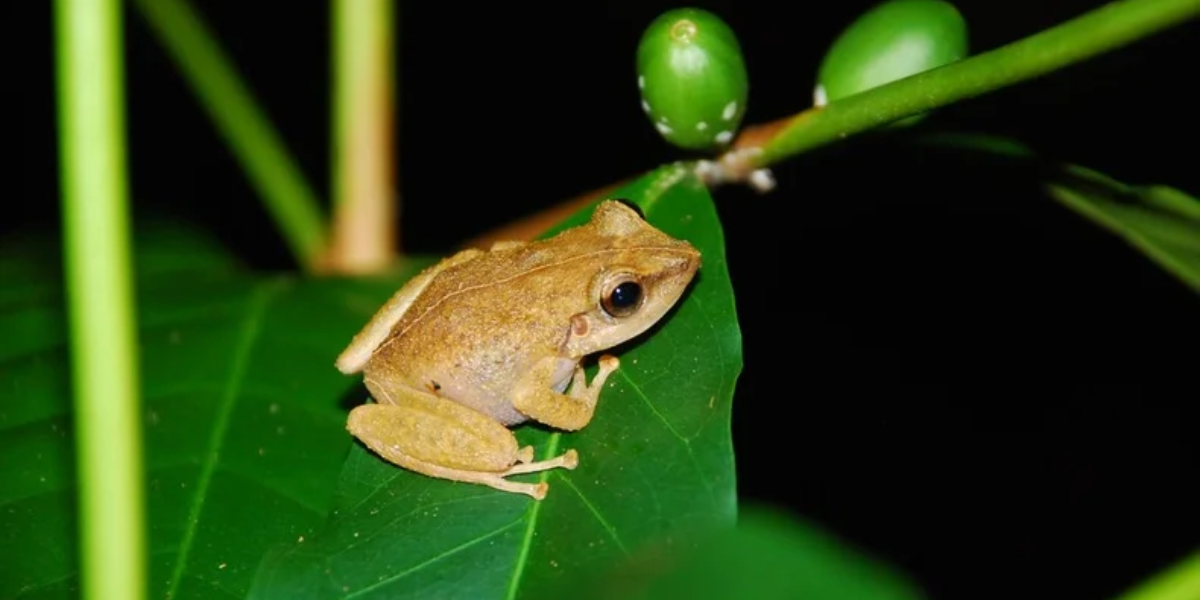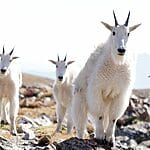7 Most Interesting Animals in El Yunque National Forest: Exploring the Puerto Rican Wildlife
Are you ready to discover the fascinating wildlife of El Yunque National Forest? From the adorable Coqui frog, Puerto Rico’s unofficial mascot, to the majestic Puerto Rican Parrot, the only native parrot on the island, El Yunque is home to a diverse array of captivating creatures.
However, these animals face numerous challenges, including habitat loss and predation by invasive species.
In this article, we’ll explore the top ten most interesting animals in El Yunque National Forest, shedding light on their unique characteristics and the conservation efforts aimed at protecting them.
Wildlife Interesting Animals in El Yunque National Forest

In El Yunque rainforest, there are many interesting animals in El Yunque. It’s the only rainforest in the U.S. This national park gives a chance to discover interesting wildlife, waterfalls, and many other captivating landscapes.
All very different from each other. Most of the interesting animals in El Yunque can not live anywhere else because of it’s unique climate and plants that can’t be found in many other places. There are not a huge number of endemic species (native to Puerto Rico) left on the island due to the human population growth and development of land.
The El Yunque National Forest is not only known for its vibrant forest ecosystems, diverse native species and abundant recreation opportunities, but also because of its geography. It’s the only rainforest in the U.S. National Forest Service.
In El Yunque rainforest there are many animals. The El Yunque contains over 240 species of native trees, of which 88 are rare and 23 are only found in the Forest.
Famous Trails in El Yunque Trail
El Yunque Trail begins at the visitors center and takes you up the mountain, where at the end of the trail you can explore the dwarf forest.
Interesting fact: The coqui frog is the unofficial national animal of Puerto Rico.
The Eastern side of the Luquillo Mountains, which has the El Yunque rainforest at the top elevations, gets most of the rain. Experience the longest zipline in the El Yunque Rainforest area (just outside of Old San Juan) – over 2300 feet (700 meters). Mt Britton trail takes you to the stone tower made by the CCC (Civilian Conservation Corps) in the 1930s, which you can climb up and see for miles.
LA Mina Trail

The most popular trail is La Mina, which follows the river by the same name through the lush foliage and crosses the water in several places. La Mina is less than a mile, but is rated as challenging due to steep curving steps
La Roca Trail

On La Roca (The Rock) on the south side of the park there are Taino petroglyphs, some of which depict their god, Yikiyú, who they believed lived in the mountains of the rainforest. There are over 240 species of plants and trees in El Yunque.
The intrigue of visiting the El Yunque rain forest is only partly in the observation of the varieties of plants that have managed to grow and adapt. For example he waters surrounding Puerto Rico are important breeding areas for humpback whales. Puerto Rico has mountain peaks, coastal areas, and acres of tropical rainforest.
Endangered Species of Interesting Animals in El Yunque rain forest
The US Forest Service has put together an Endangered Species list of El Yunque, as the Rainforest is home to 5 endangered species and 1 threatened species. Many of the native species are also on the endangered species list. Conservation groups and the Puerto Rican government have taken steps to reverse population declines among its most endangered animals.
In El Yunque, you will see mongooses, rats, and stray dogs, and cats as invasive species. Puerto Rico has 13 bat species, of which six are endemic to the island. It is one of the few places you will see unusual species like the Antillean fruit bat ( Brachyphylla cavernarum ) and Antillean ghost-faced bat ( Mormoops blainvillii ).
Did you know? There are about 14 different lizard species that make the EYNF their habitat.
Coqui frogs

Coqui frogs are accurately named, for the sound that Coqui Frogs make in the night is “koooooo- keeeee”. Some of the different species of Coqui Frogs have already gone extinct. The Coqui frog is the unofficial mascot of Puerto Rico.
This frog species got its name from its unique call, which they use while climbing trees at night. Puerto Rico’s tropical rainforest, El Yunque, offers a haven for captivating tiny frogs known as coquís.The tiny frogs are almost weightless, so they float to the forest floor unharmed.
Puerto Rican Boa

The Puerto Rican Boa ( Epicrates inornatus ) is found throughout the island and lives in El Yunque below an elevation of 1200 feet (365 meters). These snakes are one of the interesting animals in el Yunque, known for their impressive size, reaching up to seven feet in length. These non-venomous constrictors, also called yellow tree boas, display a dull brown or gray coloration adorned with dark blotches along their bodies.
Although the recovery plan for the boa was approved in 1986, its ecology is only now being understood through research conducted by the USDA Forest Service.
Puerto Rican Parrot

The Puerto Rican Parrot is the only native medium-sized green parrot on the island and was placed on the Federal Endangered Species list in 1968. There are a number of endemic birds, and loads of migratory birds. Bird watching in Puerto Rico is very easy. The most “famous” bird in Puerto Rico is the Puerto Rican parrot. Also the Puerto Rican Parrot is the only native parrot on the island
One of the 10 most endangered birds in the world, the Puerto Rican Parrot, once was abundant throughout the island, but now only approximately 40 wild birds remain. Whereas comparatively, About 130 years ago, there was an estimated 1,000,000 Puerto Rican Parrot in Puerto Rico.
The main threats to the parrot’s survival are habitat loss and predation by non-native invasive species, such as rats and mongooses. Sadly, these parrots fall under the category of Critically Endangered Species on the IUCN red list.
Adult iguanas

Adult iguanas have no predators here in Puerto Rico (cars don’t count!), so their numbers have grown so much that they are actually a nuisance! There is also a small crocodile, called a “caimen” , that can be found in low-lying, wet areas.
Puerto Rican Screech Owl

The Puerto Rican screech owl can also be found in the rainforest, and it is the only owl on Puerto Rico or the Virgin Islands.
The Puerto Rican Screech Owl (Otus nudipes) is a captivating nocturnal predator native to Puerto Rico and the Virgin Islands. Measuring only 9 to 10 inches in length and weighing 3.6 to 5.4 ounces, this small owl boasts grayish-brown plumage with white underparts marked by prominent brown streaks.
Small Indian Mongoose

In 1877, the Indian mongoose was reintroduced in Puerto Rico. These mammals have a strong resemblance to weasels. With their grayish-brown slender bodies and long tails, these small mammals weigh around 30 pounds.
These are opportunistic feeds, which means they eat whatever is available, like insects, frogs, birds, fruits, and small mammals. These mongooses are listed as a “Critically Endangered” species on the IUCN red list of endangered animals.
Emerald anoles

Emerald anoles have a yellow and brown dewlap (a flap of skin beneath the jaw or neck) that they extend when defending their territory. They can change their color from green to very dark brown when excited.
You can see emerald anoles and other lizard species along the trails in El Yunque. These lizards are found throughout the forest and are one of the interesting animals in el yunque.
Frequently Asked Questions
Can visitors interact with the animals in El Yunque?
Visitors to El Yunque National Forest in Puerto Rico cannot interact with the animals in the wild. The park strictly prohibits feeding, touching, or disturbing the wildlife to protect both the animals and visitors. It is essential to respect the natural habitat and observe animals from a safe distance to ensure their well-being and safety.
Are guided tours available for wildlife enthusiasts?
Yes, guided tours are available for those interested in exploring El Yunque’s wildlife. Experienced guides can provide valuable insights into the habits and habitats of the park’s inhabitants.
Is El Yunque a safe environment for these animals?
El Yunque National Forest provides a safe environment for its diverse wildlife. The park’s protected status and conservation efforts aim to preserve the natural habitat and ensure the well-being of the animals that call it home. The forest serves as a sanctuary for a variety of species, including the critically endangered Puerto Rican parrot, making it a vital area for biodiversity conservation.
Can I capture photos of these animals during my visit?
Absolutely! Photographing these animals can be a memorable part of your visit. Remember to use a respectful approach and avoid using flash, which can disturb the animals.
How can I contribute to the preservation of El Yunque’s wildlife?
Supporting organizations dedicated to conservation and responsible tourism can make a positive impact. Additionally, practicing Leave No Trace principles during your visit helps protect the animals’ natural habitats.
- If Wolves Went Extinct - 2024-04-30
- List Of 16 Animals That Start With U - 2024-04-30
- 7 Most Interesting Animals in El Yunque - 2024-04-30









